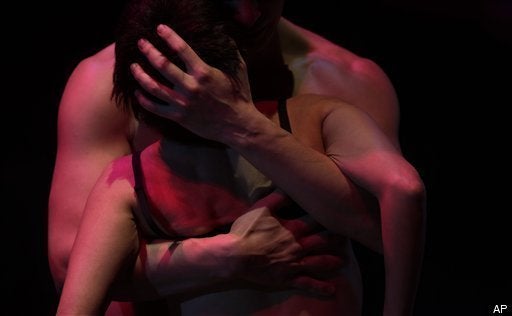
What is it about a vampire and a werewolf that make everyone's pants fly off? Between the pandemonium over Twilight and True Blood, there's been renewed interest in why horror and sex have made a comeback in each other's arms.
I've been publishing erotic literary fiction since the 1980s, so I've witnessed both the historical blood wedding of two genres— and the new twist in events.
Supernatural erotica— be it speculative fiction, horror or fantasy— is a genre where taboos are catnip. "Uncivilized" behavior, on every front, is the ultimate in escapist literature.
But sci-fi and horror have something else in common with erotica — they've both been traditionally demonized as "harmful" and "contributing to juvenile delinquency." They were each considered pulp fiction in the early days of the paperback revolution in the 1940s and 50s— subject to bans, censorship, and angry church campaigns.
In the Mad Men era, you used to find science fiction exclusively in clandestine collector's shops where no "respectable" reader would be found. It cost a dime a day to rent out a novel! The same books were banned, not even considered, at libraries and "decent" bookstores. Yes, I'm talking Isaac Asimov, and all the early greats. Many Sci-fi authors frequently wrote "porn" without distinguishing whether one genre got them into more trouble than the other. They were making a living. Writing tall tales about other planets and creatures was as disreputable as writing about life between the sheets.
Years later, as fantasy and sci-fi took entered the sweet spot of the bestseller lists, the most famous s/f authors' arms were open to their erotic colleagues. Heinlein, Asimov, Silverberg, Bradbury— all of them were sympathetic to the writer whose sexual point of view had come under the censors' thumb. They'd been there themselves.
Some famous fantasy and sci-fi authors are still writing erotica under pseudonyms today, because they don't want to find themselves perpetually tarred with a scarlet letter. The latest anthology I edited, Bitten, includes a story, "The Unfamiliar," by a well-known sci-fi woman author who writes erotica under the pen name of "Allison Lawless." I'll never tell-- but I hope she will, someday.
The real turn in "vampire porn" happened in the course of the AIDS crisis. Every great public terror and prejudice expresses itself in an erotic catharsis, and "blood-sharing" was no different. In the earliest days of the HIV pandemic, when no one knew where to turn, vampire stories, and all intimate tales of blood-sharing, filled my slush pile to the brim.
Ironically, the bleeding edge of erotica today has been in cable television lately, not literature. The vampire writings of Anne Rice and others, so volatile in the 1980s, are now the fount of wisdom for hits like True Blood. I recognize many episode scripts from short stories I published during the '90s in my original series, Best American Erotica — again, a banned book in some quarters!
I was only a tiny bit surprised to see that a Best American Erotica alumni, Chris Offutt, was True Blood's story supervisor for their first season. If you had told him 10 years ago that Hollywood would be embracing his work, I don't know if he would've believed you.
Sera Gamble, screenwriter for the TV cult hit, Supernatural, has a story in Bitten, called "The Devil's Invisible Scissors," about a female creature who "cuts" souls to stay alive. Sera was also scouted for True Blood by the producer, who'd read her horror-erotica in one of my previous anthologies.
Many pop cult experts are surprised to hear that anyone is interested in short stories today, but you can't say that for the visionaries of the LA film and TV business. They are entirely dependent on short story writers and erotic vanguardists to give them fresh meat.
One of the most legendary of all the "eerie" writers, Francesca Lia Block, is another Bitten contributor. She created gothic masterpieces for YA literature, like Weetzie Bat, long before the expression became a catchword. When disaffected youth meet paranormal circumstances— sexual controversy is inevitable. Her story, "Lay Me Out Softly," is an inspiration for a new novel she's working on now.
The thing that bores me a bit about Gothic lore is its relentless Christian themes. Sometimes you want a taste of something different, that isn't based on Victorian Colonial fantasies! I lucked out that one of my authors, Tsaurah Litzky, wrote a story called "The Witch of Jerome Avenue," which comes out of a tradition of Jewish mysticism. It was a pleasure to change the gothic lens!
What perhaps gets overlooked in gothic erotica is that when it doesn't make you swoon, it's exercising the most damning political and religious satire imaginable. Those Christian themes I mentioned are stretched on the rack, with a few cackles and unrepentant orgasms thrown in. My personal favorite in my book is Ernie Conrick's story, "Get Thee Behind Me Satan," which elicits a spectacular downfall from the wages of sin that even Sookie Stackhouse couldn't imagine. As a young girl who spent a great deal of her childhood on her knees, in pews, worried to death about being "good"— I have to say I enjoy a little enlightened revenge.